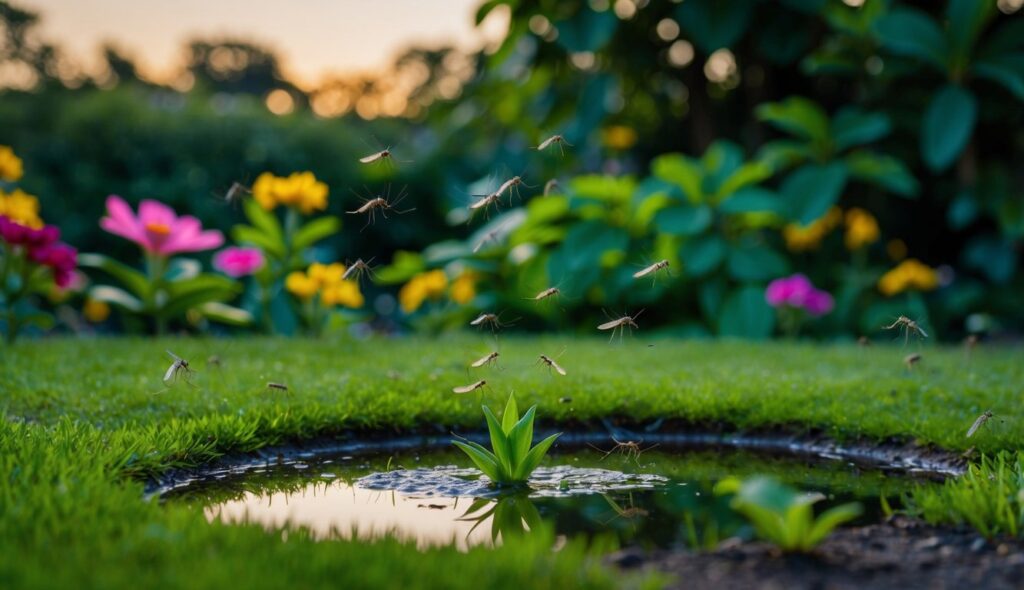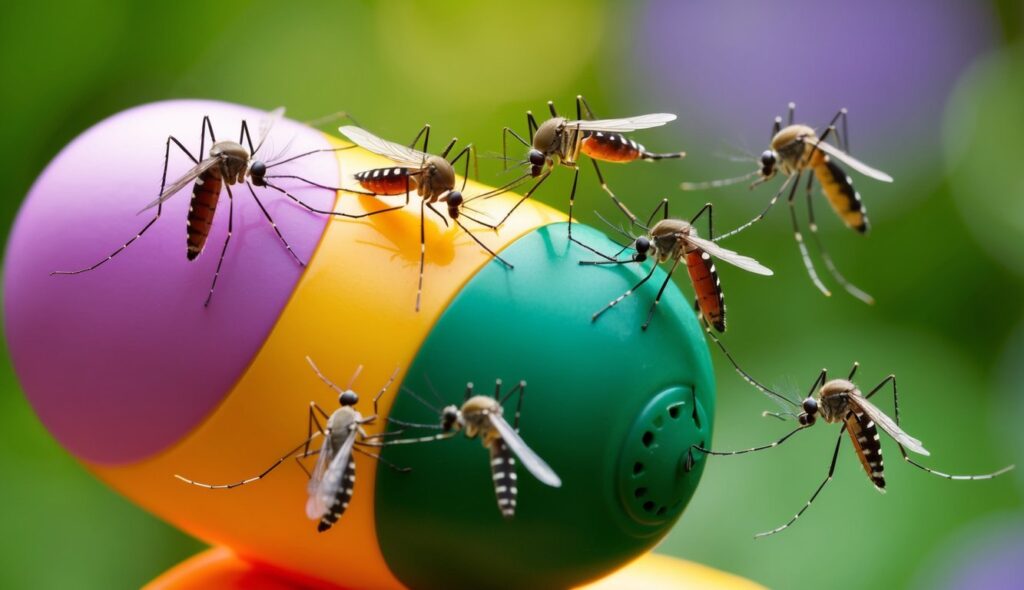Mosquitoes can ruin your summer evenings. But did you know that the colors you wear can attract or repel them? It’s not a myth, it’s science!

Mosquitoes are particularly attracted to red, orange and black. These colors attract them like magnets. Conversely, green, violet and blue repel them. These preferences are linked to the way these insects perceive colors and search for prey.
Your clothes aren’t the only thing that attracts mosquitoes. Your body odor, perspiration and even your breath play a role. These flying insects are attracted by the carbon dioxide you exhale.
Key points
- Red, orange and black attract mosquitoes
- Green, violet and blue repel mosquitoes
- Body odor and exhaled CO2 also attract mosquitoes
The influence of colors on mosquito behavior

Color plays a crucial role in attracting mosquitoes. Some colors attract them, while others repel them. This information is essential for better protection against these insects.
The attraction and repulsion of specific colors
Mosquitoes are particularly attracted to red, orange and black. These warm, dark colors attract them like magnets. Cyan is another hue they find particularly attractive.
Conversely, white, green, blue and violet seem to interest them less. These cool, light colors don’t provoke the same reaction in mosquitoes.
Interestingly, contrasting patterns, such as checkered clothing, are more attractive to mosquitoes than solid colors.
Colors and host detection by mosquitoes
Mosquitoes use visual stimuli to locate their prey. They are sensitive to differences in contrast and brightness.
A study conducted by the University of Washington, published in Nature Communications, has shed light on this phenomenon. The researchers, led by Jeffrey Riffell, worked on the Aedes aegypti species.
They discovered that mosquitoes are more attracted to certain colors when they detect CO2. This gas, present in our breath, alerts them to the presence of a potential host.
Implications of colors in prevention measures
To protect yourself from mosquitoes, choose your clothes carefully. Choose light colors such as white, green or light blue.
Avoid wearing red, black or orange, especially outdoors. These colors make you more visible to mosquitoes.
Don’t forget that contrasting patterns should be avoided. Prefer plain clothes in light shades.
These color choices, combined with other protective measures, can considerably reduce the risk of mosquito bites.
The science behind mosquito color perception

Mosquitoes have sophisticated vision that plays a crucial role in their search for prey. Their color perception is influenced by various environmental and biological factors.
Recent studies and discoveries on mosquito vision
Researchers at the University of Washington have made a surprising discovery. Mosquitoes are particularly attracted to certain colors, such as cyan, yellow, orange and red. This attraction is stronger when these colors are associated with body odors.
Your choice of clothing can therefore influence your risk of being bitten. Dark colors, especially black, are also very attractive to mosquitoes. Conversely, white and green seem less attractive.
Scientists have also noted that mosquitoes prefer contrasting patterns to solid colors. A striped t-shirt could therefore make you more visible to them.
Role of other attractants in combination with colors
Mosquito color perception is closely linked to other stimuli. The CO2 you exhale plays a key role. When mosquitoes detect this gas, they become more sensitive to visual signals.
Your body odour and skin temperature are also important factors. Mosquitoes are attracted by heat and certain molecules in your perspiration.
Jeffrey Riffell, a researcher involved in these studies, points out that it’s the combination of these elements that guides mosquitoes to you. Your breathing, your body temperature and the colors you wear form an attractive cocktail for these insects.
Frequently asked questions

Colors play an important role in attracting or repelling mosquitoes. Some shades can help you avoid being bitten, while others may attract these insects. Here are the answers to the most frequently asked questions on this subject.
What shades of color are known to repel mosquitoes?
Light, pastel colors are effective at repelling mosquitoes.
White, light blue, light green and mauve are particularly recommended.
These hues reflect light and make it harder for mosquitoes to spot you.
Are there skin colors more likely to attract mosquitoes?
Skin color in itself doesn’t specifically attract mosquitoes.
However, these insects are sensitive to body heat and the carbon dioxide you exhale.
These factors can vary from person to person, regardless of skin color.
Is it true that blue can help keep mosquitoes away?
Yes, light blue is one of the colors that repels mosquitoes.
Wearing light blue clothing can help reduce the risk of bites.
This color is not attractive to mosquitoes and may encourage them to look for other targets.
What fragrances or smells are likely to attract mosquitoes?
Mosquitoes are attracted by certain body odors.
Sweat, lactic acid and ammonia present in perspiration are particularly attractive.
Certain floral or fruity fragrances can also attract these insects.
It’s best to avoid using scented products outdoors.
Can wearing black clothing increase mosquito attraction?
Yes, black is one of the most attractive colors for mosquitoes.
These insects are sensitive to dark colors.
It’s best to avoid black, navy blue or dark red clothing if you want to limit mosquito bites.
What color LED light is effective at repelling mosquitoes?
Yellow or orange LED lights are effective at repelling mosquitoes.
These insects are less attracted to these wavelengths.
Conversely, white or blue lights tend to attract mosquitoes.
So opt for warm lighting for your outdoor spaces.